
Kosmonavtlar is a metro station in Tashkent, Uzbekistan. It’s the blue line (O’zbekiston yo’li) out of 3.5 active lines of Tashkent Metro. Taking photos inside the exquisite – often Soviet-era – metro stations in Tashkent was illegal until June 2018. Ever since loads of photos and videos of beautiful stations have popped up on the internet. However, I’d like to draw your attention to the best one: Kosmonavtlar (Russian: Космонавтов)—or ‘Cosmonauts’ in English.
During the first 16 days I spent in Tashkent, I visited a lot of metro stations. But somehow I only found out about Kosmonavtlar a few days before we left for Samarkand. I tried to justify a trip to this metro station with Jonas just for kicks, but he wasn’t into venturing out just for a station. In order to fly to Ukraine, we had to return to Tashkent anyway. So I suggested that we’d book a hotel for our return to Tashkent within walking distance of the metro.
Contents
- 1 Video
- 2 Visiting Kosmonavtlar: Exceeded Expectations
- 2.1 Statues Above Kosmonavtlar Station
- 2.2 Finally, the Platform of Kosmonavtlar
- 2.3 Mirzo Ulugh Beg
- 2.4 Yuri A. Gagarin
- 2.5 Icarus
- 2.6 Konstantin E. Tsiolkovsky
- 2.7 Valentina V. Tereshkova
- 2.8 Alexei A. Leonov
- 2.9 Vladimir A. Dzhanibekov
- 2.10 Sergei P. Korolyov
- 2.11 Programma “Interkosmos”
- 2.12 Apollo–Soyuz
- 2.13 Person. Mind. Universe
- 2.14 The First Automatic Vehicle “Lunokhod”
- 3 Good read? Consider buying me a recovered water!
- 4 Thanks for reading! Wish to share?
Video
If you prefer video, here’s my YouTube #Short about Kosmonavtlar and a generic #Short about some metro stations in Tashkent.
On the day of visiting Kosmonavtlar station, we also had some business elsewhere in Tashkent, for which we needed to take the metro. Therefore we left our hotel Grand Art on foot and wandered to the station. Above ground at the entrance of our choosing, there is a bust of Vladimir Dzhanibekov and a bigger statue with three people, left to right: Konstantin Tsiolkovsky, Yuri Gagarin (?) and perhaps Vladislav Volkov (?) who is hugging Gagarin in a manly way. (I’m not 100% sure of the two guys on the right and if you know better, please comment!)
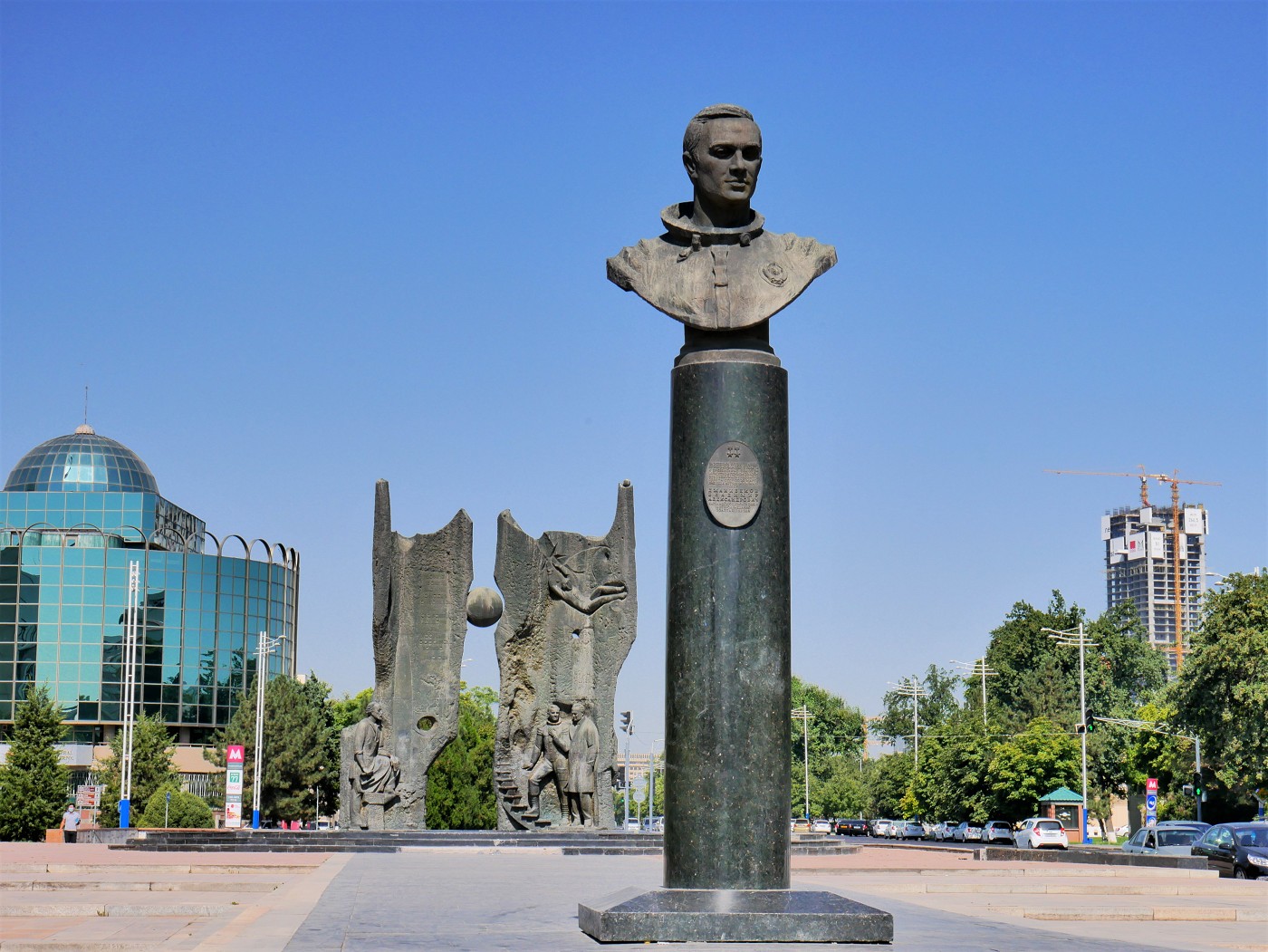
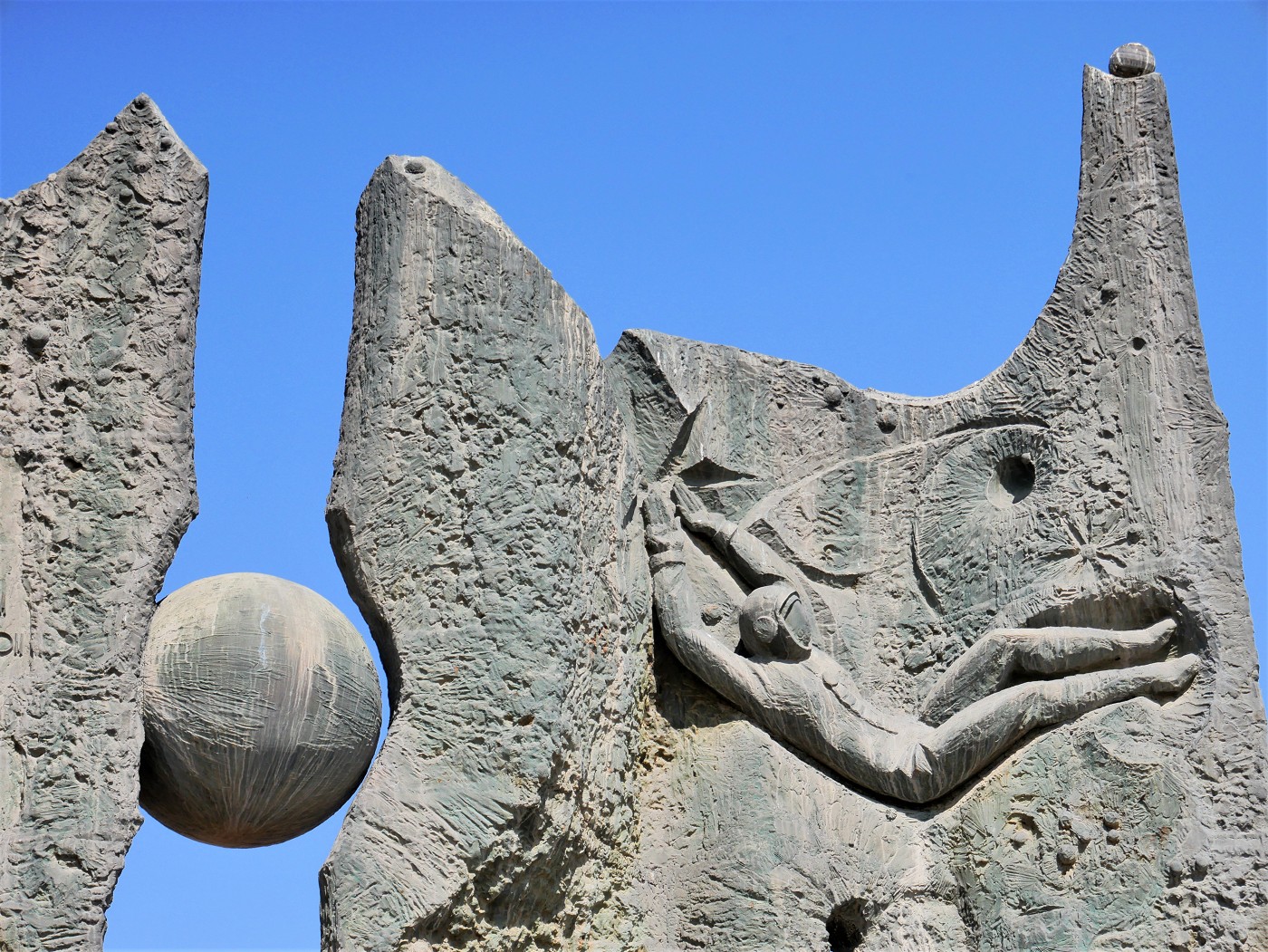
The quote by Tsiolkovsky is in a bit of a tricky font and lacks punctuation. But I managed to decipher and translate it for those who care:
“Человечество не останется вечно на земле но в погоне за светой и иространством сначала робко проникнет за пределы атмосферы а затем завоюет себе все околосолнечное пространство”
“Humanity will not remain on Earth forever, but in pursuit of light and space, at first it timidly penetrates beyond the atmosphere and then conquers the whole of solar space”
Nice. I, for one, can’t wait to penetrate beyond this atmosphere.
The drama of this statue cannot be overstated. Pay particular attention to the helpless, untethered cosmonaut floating through space surrendering to the void.
Though we didn’t walk to the backside of this statue (big mistake), I found photos of it online. Behind are hiding: my man Ulugh Beg, Icarus, and a woman holding a baby (yikes). Edited to add: I heard that she’s supposed to represent Mother Earth.
Hiding from the star that is simultaneously our favorite and least favorite one, we ducked into the shadow realms of Tashkent Metro. We bought two tickets at the counter and descended to the platform. The entrance we chose had a nice spacey art piece above the stairs, just a sample of the shine that would give me temporary relief from the pains of gravity.
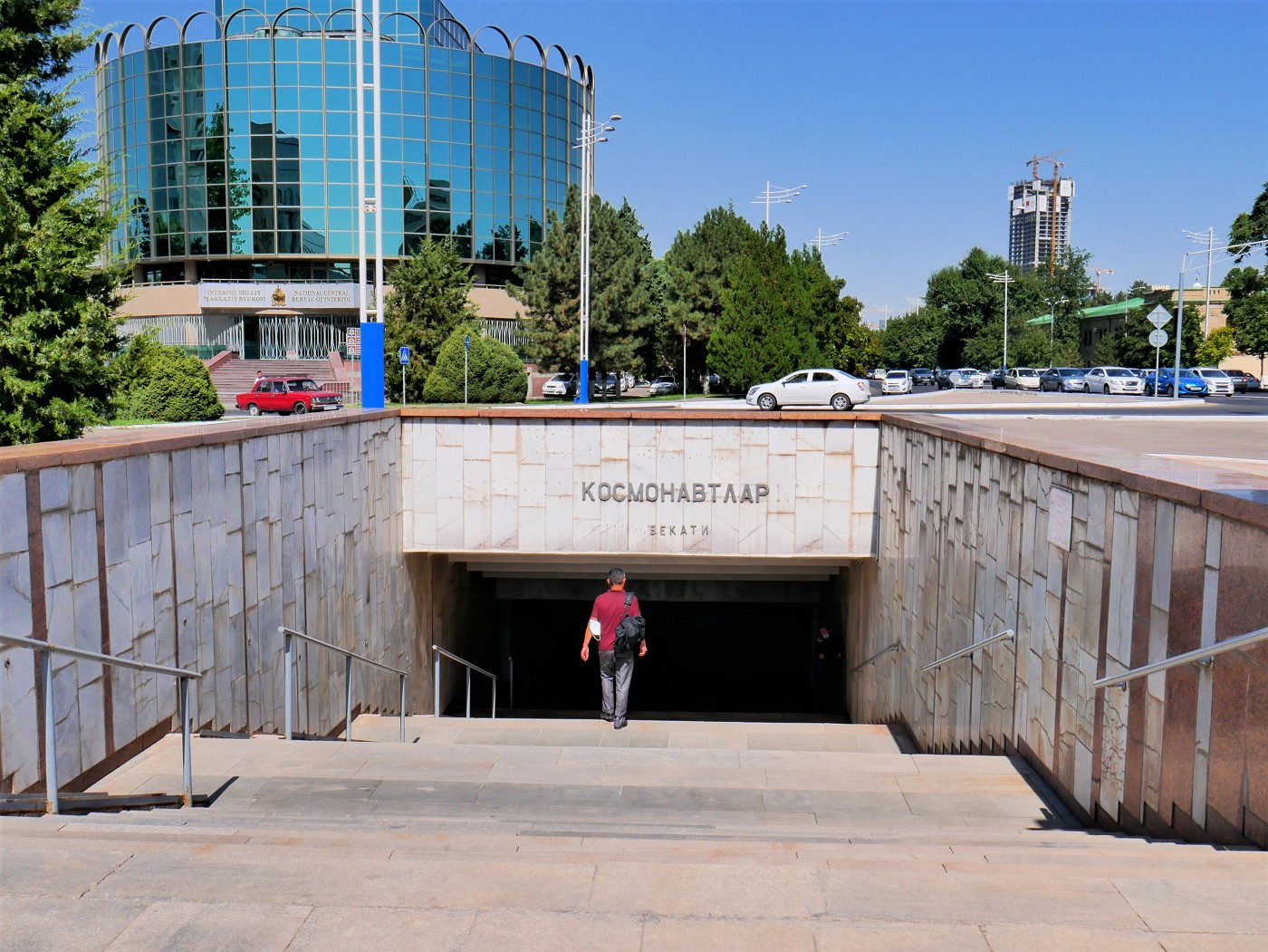
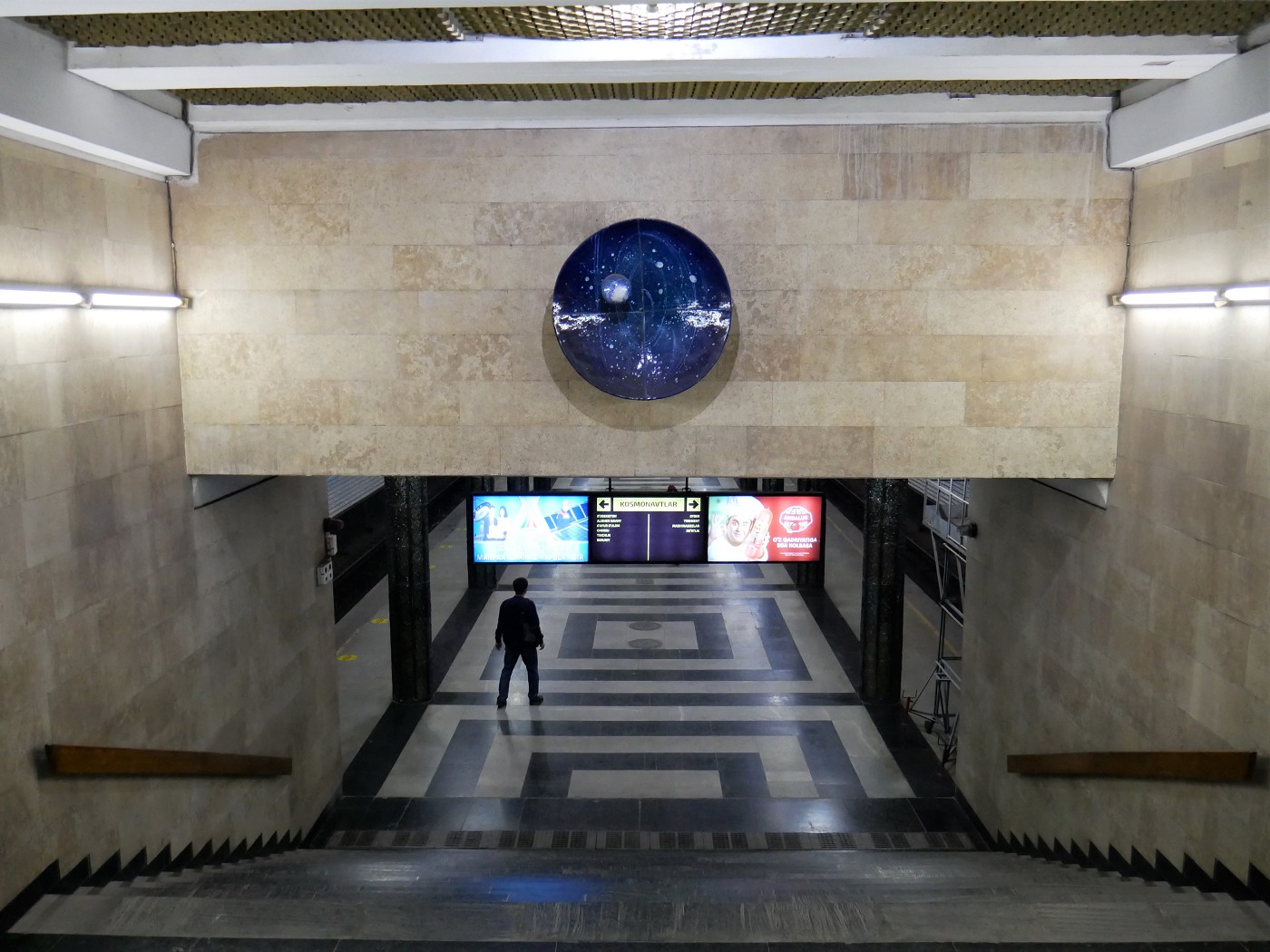
We descend the stairs to the platform where we’re welcomed to the lowest amount of light allowed in a metro station without causing babushkas to tumble down onto the tracks. The first things that stand out are the shimmering pillars flanking the cloudy white pattern on the ceiling. The materials look otherworldly; it’s the kind of space futurism of the cold war, hopelessly guessing at what the bright Soviet future will look like and getting it wrong. The next thing that draws attention to itself is the shimmering gradient from a shade of light blue common in Uzbekistan to a dark hue that only looks inviting to those who are dark of mind.
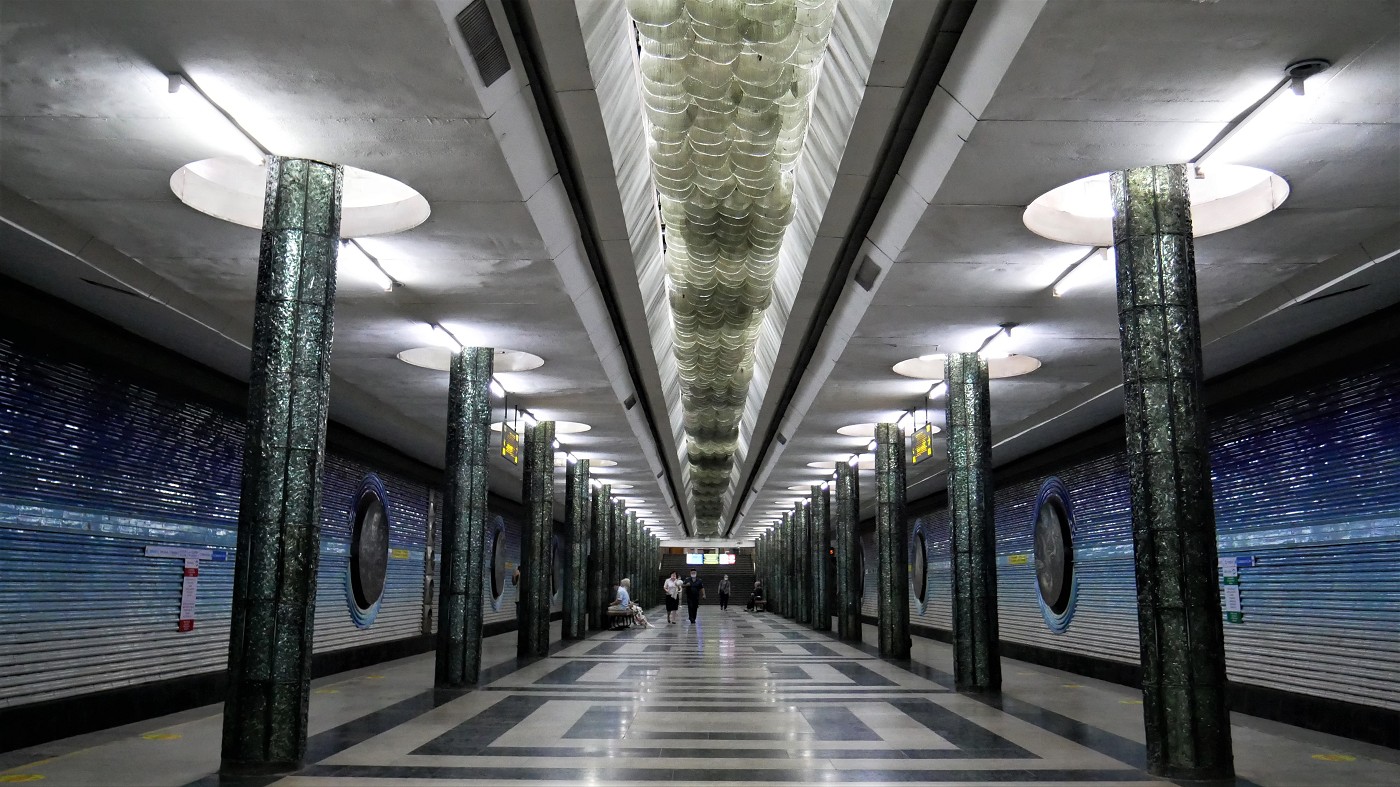
The space is filled up with something to satisfy the earthlings who abhor a vacuum. Great circular medallions of grey are evenly and symmetrically spaced out to pay homage to people who will be either dimly remembered by our uploaded consciousnesses or forgotten altogether in the post-apocalyptic landscape we’re working so hard to build with every birth. From where I am standing, it could go either way.
As a person not consulted before their existence, I would want to live neither in the problematic past nor the fucked future. I am completely satisfied with my existence in this fleeting moment while admiring Soviet interior design. The practicality of this place doesn’t even matter as some rolling stock arrives and Jonas asks if I want to get on. I thought we’d discussed this.
I am where I am supposed to be; wandering my mass around an aesthetically pleasing metro platform with my neither professional-sized nor amateur-type of camera, capturing away at objects that will be looted by the poor if given the option. A platform guard looks at me while I turn my body to the side to hide my small-after-all camera. Despite the lifting of the photography ban, I am still wary of the tiny Facebook group admin hiding in the brain of anyone who wears a uniform. I do not want to have to delete photos, again.
I explore all the medallions hanging on the wall. Now continuing in a less pretentious tone, this is who they are:
Mirzo Ulugh Beg

This guy is Uzbekistan’s pride, known for his creation of educational centers, diametrically opposed to the conquest and destruction during the time of his grandfather. For example, Ulugh Beg built a huge observatory back in the 15th century in Samarkand. Consequently, Samarkand was at a major center of scientific discovery for a few decades during Ulugh Beg’s lifetime.
Spoiler alert: Ulugh Beg’s son destroyed it out of spite. Nevertheless, his legacy of great scientific precision lasted and you’ll find loads of places named after him or carrying his image—such as Kosmonavtlar station.
Yuri A. Gagarin
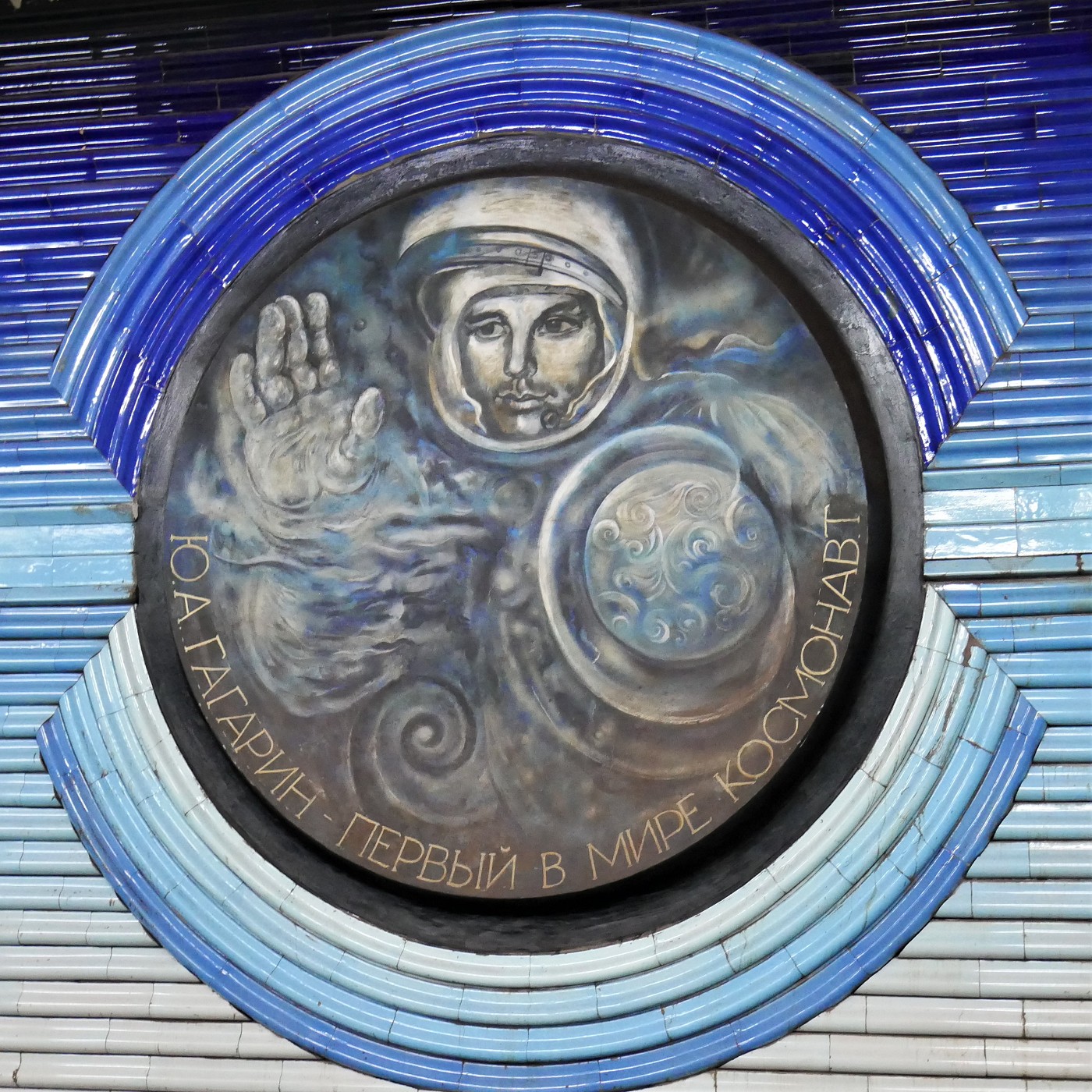
Probably the most beloved figure in Soviet history, Gagarin – 27 years old at the time – became the first human in space in April 1961 on mission Vostok 1. You can’t name your metro station ‘Kosmonavtlar’ and not pay homage to this man who died in a plane seven years later.
If you love watching movies in Russian, here’s a recommendation Gagarin: First in Space (2013). It certainly has a delightfully optimistic tone and I thoroughly enjoyed this kinda propagandist watch. It’s on Netflix with the right VPN and we watched with English subtitles.
Icarus
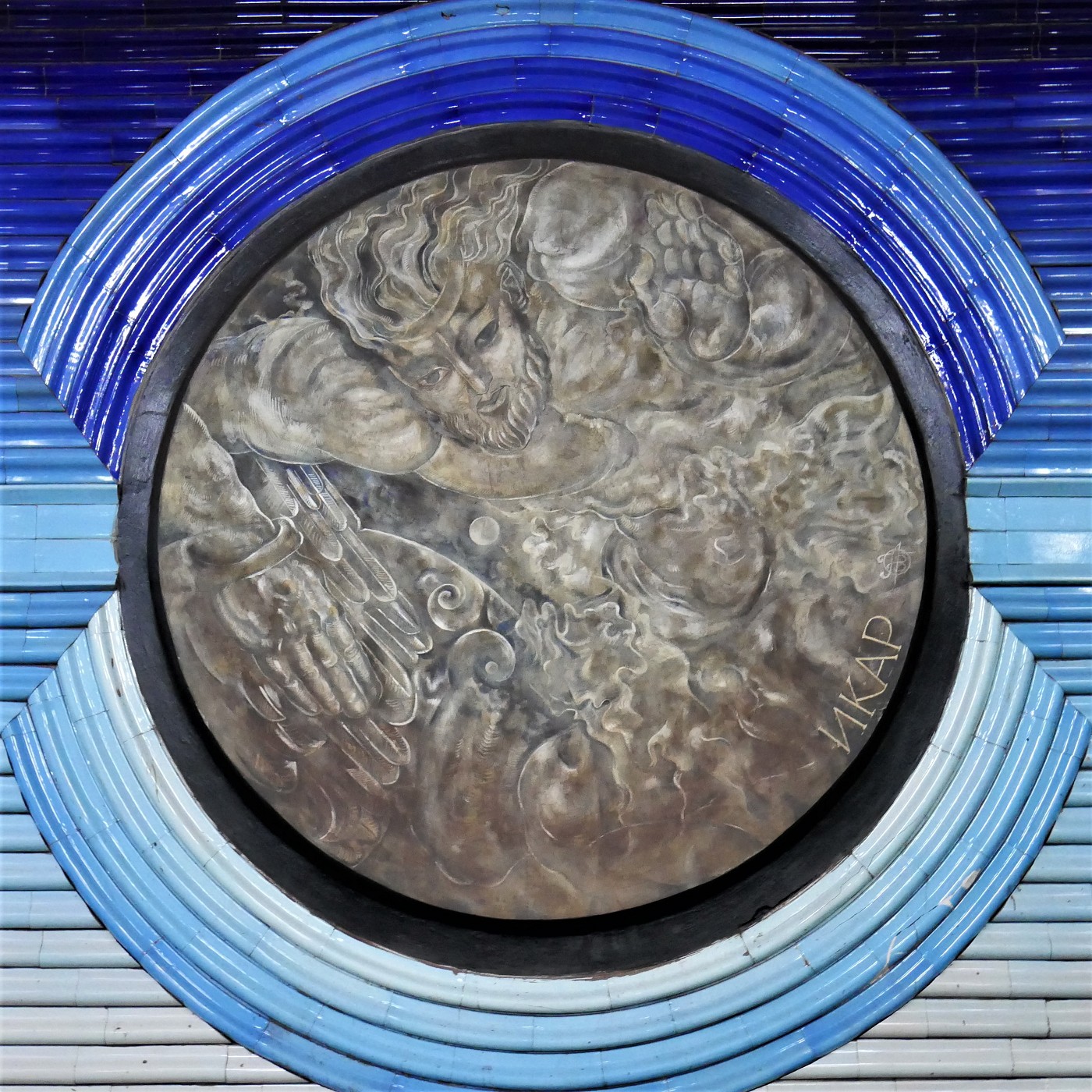
This is a weird one, huh? I don’t know, I’d rather not explain the story of Icarus (Russian: Ikar) because I’m getting flashbacks from Greek and Latin classes in high school.
In short: Icarus tries to fly to the sun with DIY wax and feather wings and it turns out to be a bad idea because was melts when heated. He dies. It’s a lesson about hubris and humility, but honestly, I think the Soviet space program was full of hubris that worked out rather well for them in the end.
Konstantin E. Tsiolkovsky
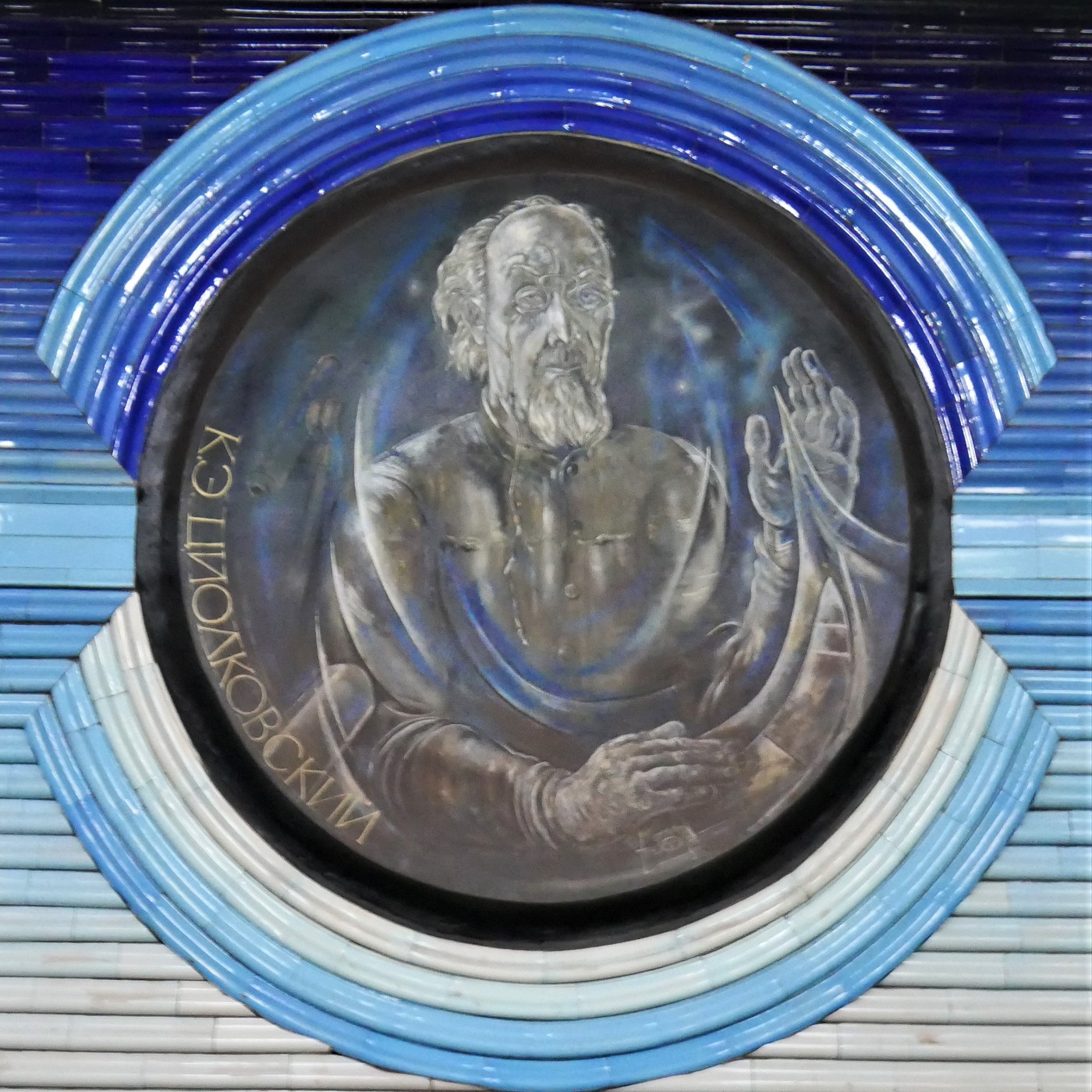
I had never heard of this guy before visiting this metro station. He’s one of the founding fathers of rocket science (rocketry) and astronautics along with three other guys from other countries. Tsiolkovsky was born in the 19th century during the Russian Empire and died in 1935 in the Soviet Union. His main spiel is the rocket equation named after him and it has all the good sciency things like thrust, momentum, unburnt accelerant, and the like.
Valentina V. Tereshkova
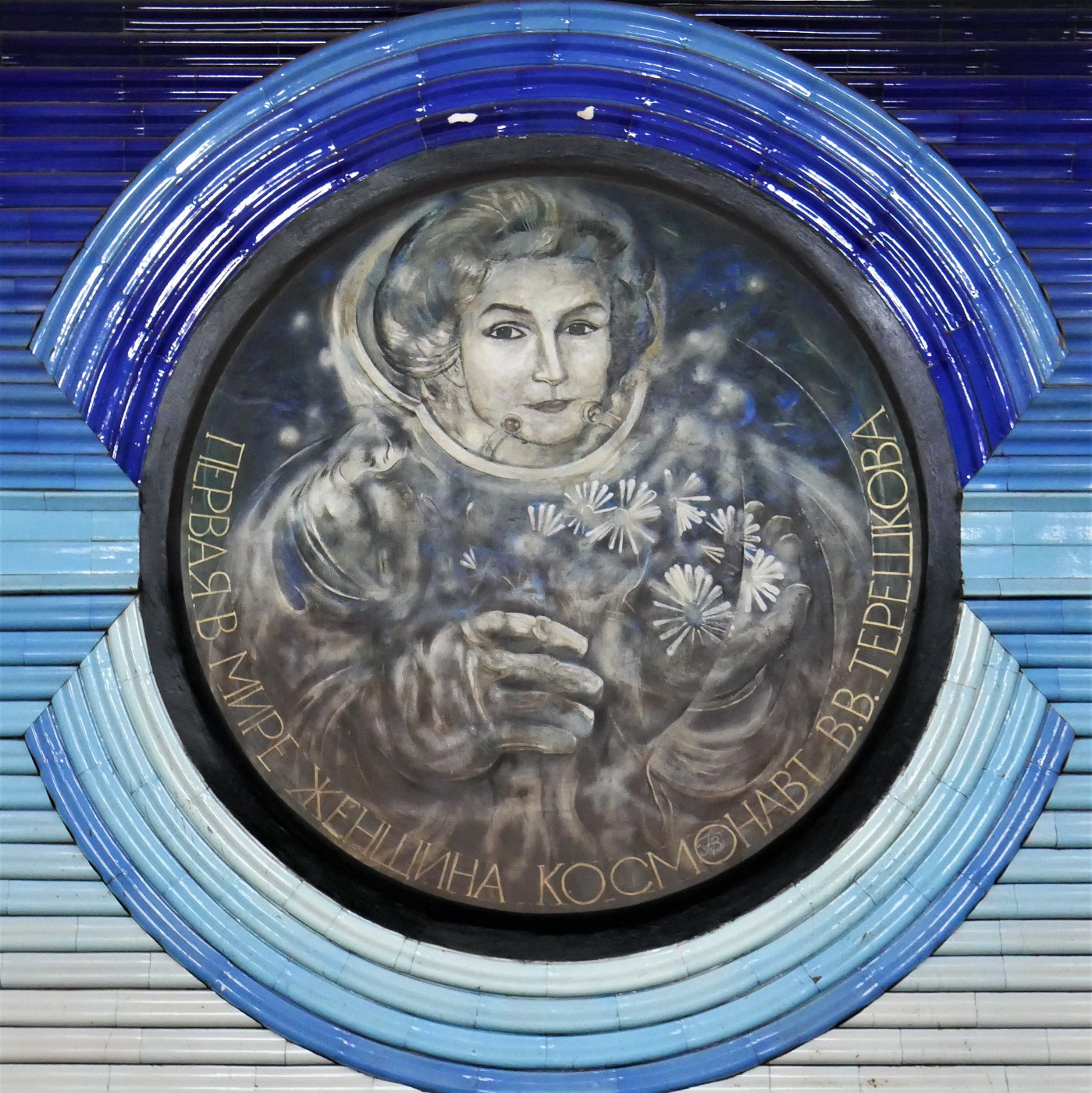
No Soviet metro station is complete without a woman doing the same thing men have done before her. Tereshkova – at 26 years of age – is the first woman who went to space in 1963 on Vostok 6. I absolutely love for her that she went solo, and honestly, I’d probably prefer to do the same. Vostok 6 also was the last mission with this type of spacecraft before the Soviet space missions switched to Voskhod spacecraft. The Vostok capsule ejected the cosmonaut upon re-entry into the atmosphere at about 7000 meters and she parachuted down as was all part of the plan. She landed here west of Barnaul in Altai Krai. Villagers helped her out of her – probably ill-fitting – spacesuit and they invited her for food. So of course she said yes. Honestly, this is all very, very relatable.
However, she went on to pursue a career in politics and became a member of the russian Duma. In 2022, she voted in favor of the russian invasion of Ukraine. So this boot-licking coward can go hug a landmine.
Alexei A. Leonov
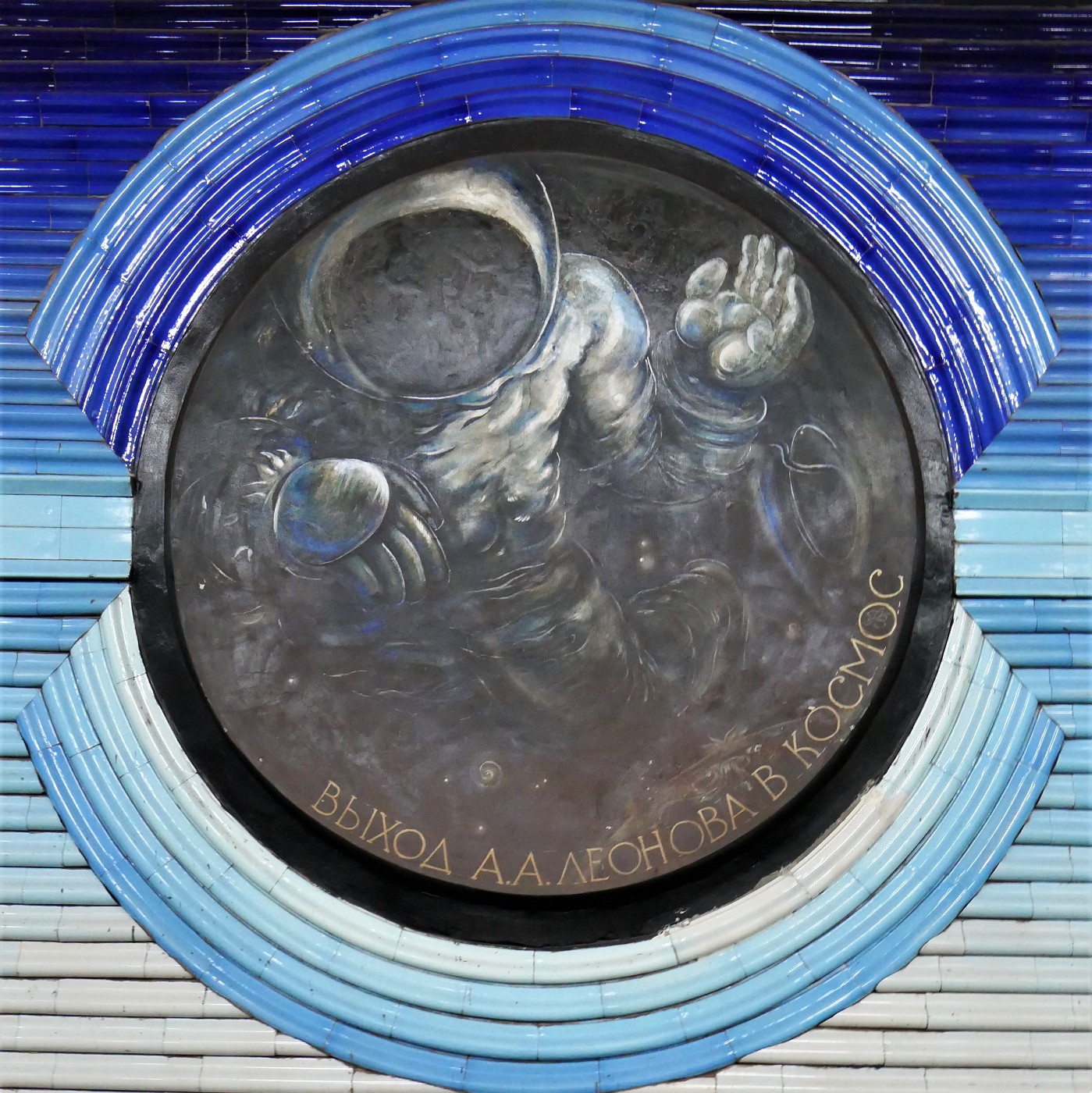
The first human to conduct a spacewalk in 1965 on the suspenseful Voskhod-2 mission. In the medallion, he’s portrayed as having his space sunglasses down as instructed, but he only put them halfway down during his actual spacewalk. He and his colleague Pavel Belyayev had to survive in the wilderness of Perm Oblast for a couple of days before they were recovered. Side note: since 2020, you can hike to the Voskhod-2 landing location via a nice boardwalk. Leonov was also there to command the Soyuz part of the 1975 Apollo-Soyuz mission (see below) and shake hands with his NASA counterpart Thomas P. Stafford.
Leonov passed away in 2019.
Vladimir A. Dzhanibekov
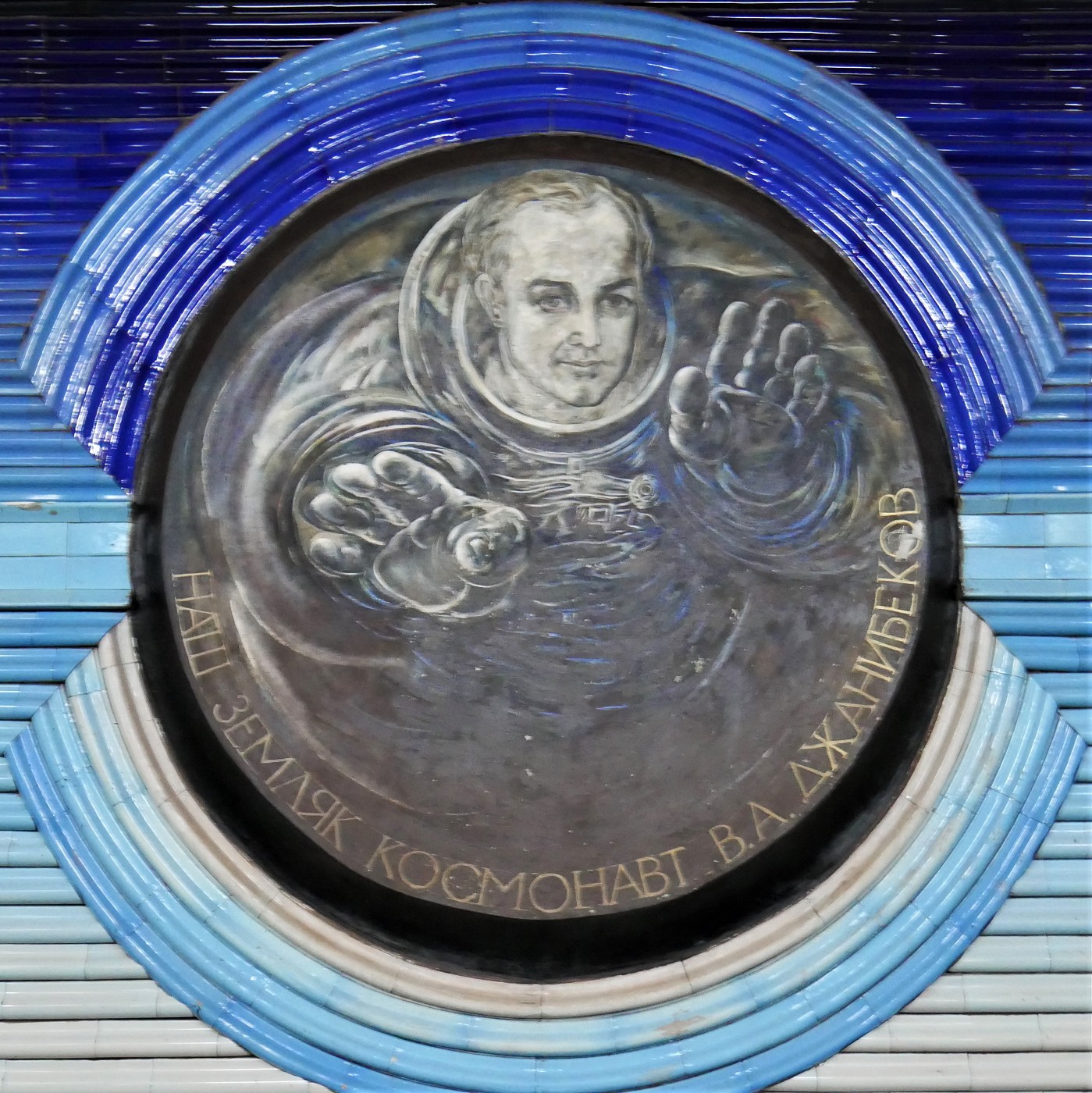
Born when his village was part of the Kazakh SSR but then moved to the Tashkent Region of the Uzbek SSR, Dzhanibekov is the only real Uzbekistani cosmonaut who has a plaque in Kosmonavtlar metro station. He made five flights to space on the Soyuz spacecrafts between 1978 and 1985. He docked on the orbital space stations Salyut 6 and Salyut 7. During his fifth and last mission, he arrived at Salyut 7 when all the space station’s electrical stuff was dead. This event was portrayed in the 2017 film Salyut 7, which I’d love to watch one day.
I wonder if Dzhanibekov sometimes takes the Tashkent metro and makes a stop at Kosmonavtlar to look at his portrait. That would probably be weird. By the way, his text reads “Our fellow countryman cosmonaut V.A. Dzhanibekov”.
Sergei P. Korolyov
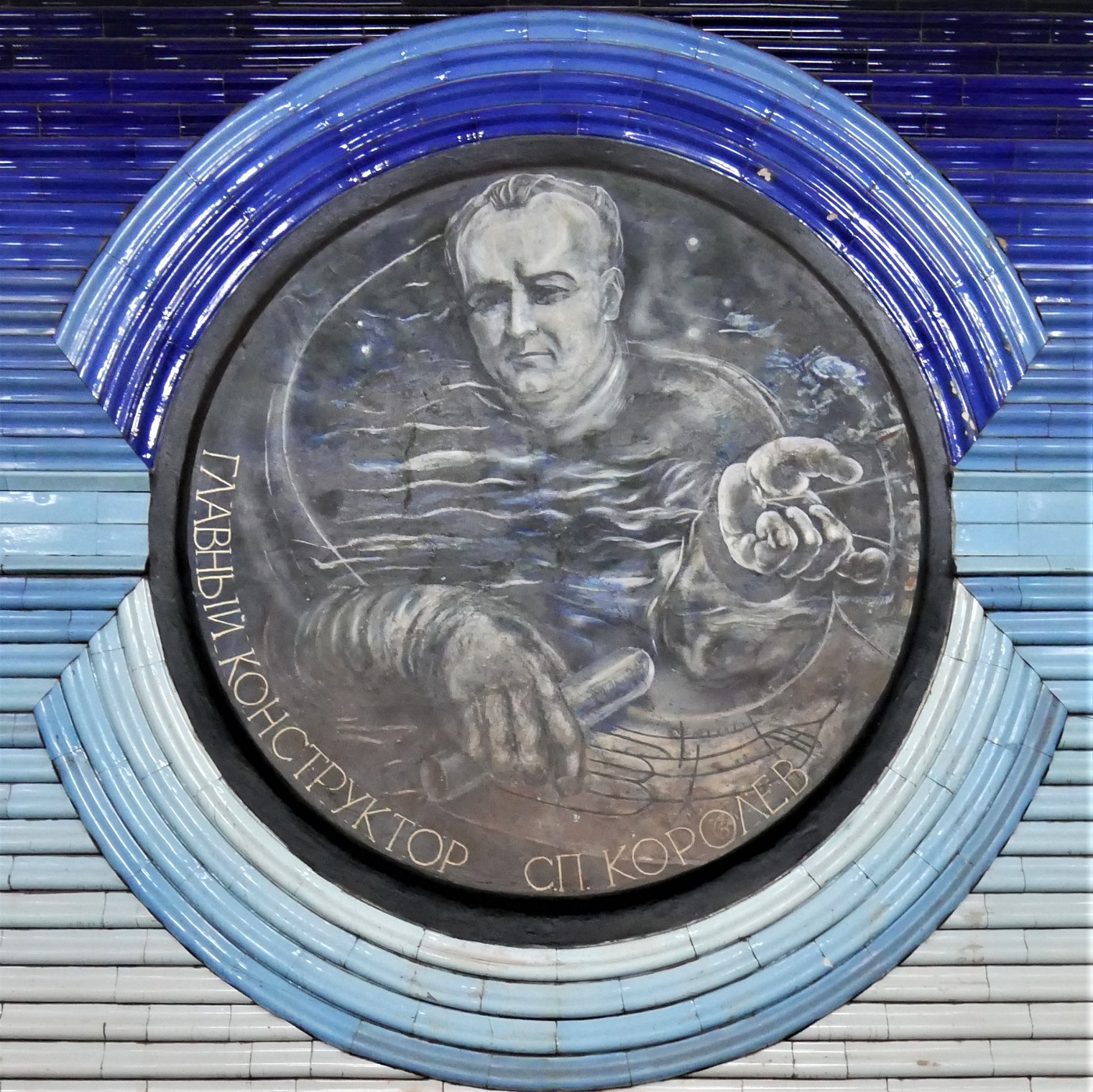 Though he’s never been to space, none of the Soviet missions would have launched without this guy. He was out there managing things during the real early days of the Space Race. Korolyov was the chief Soviet rocket scientist and designer for Sputnik 1, the first artificial satellite that orbited Earth, in 1957.
Though he’s never been to space, none of the Soviet missions would have launched without this guy. He was out there managing things during the real early days of the Space Race. Korolyov was the chief Soviet rocket scientist and designer for Sputnik 1, the first artificial satellite that orbited Earth, in 1957.
Likewise, he was also responsible for sending Laika – the first dog in space – on Sputnik 2 in orbit, who died by overheating. After that, he also helped Gagarin into space.
He died in 1966 after which someone else took over management of the Soviet Space Program.
Programma “Interkosmos”
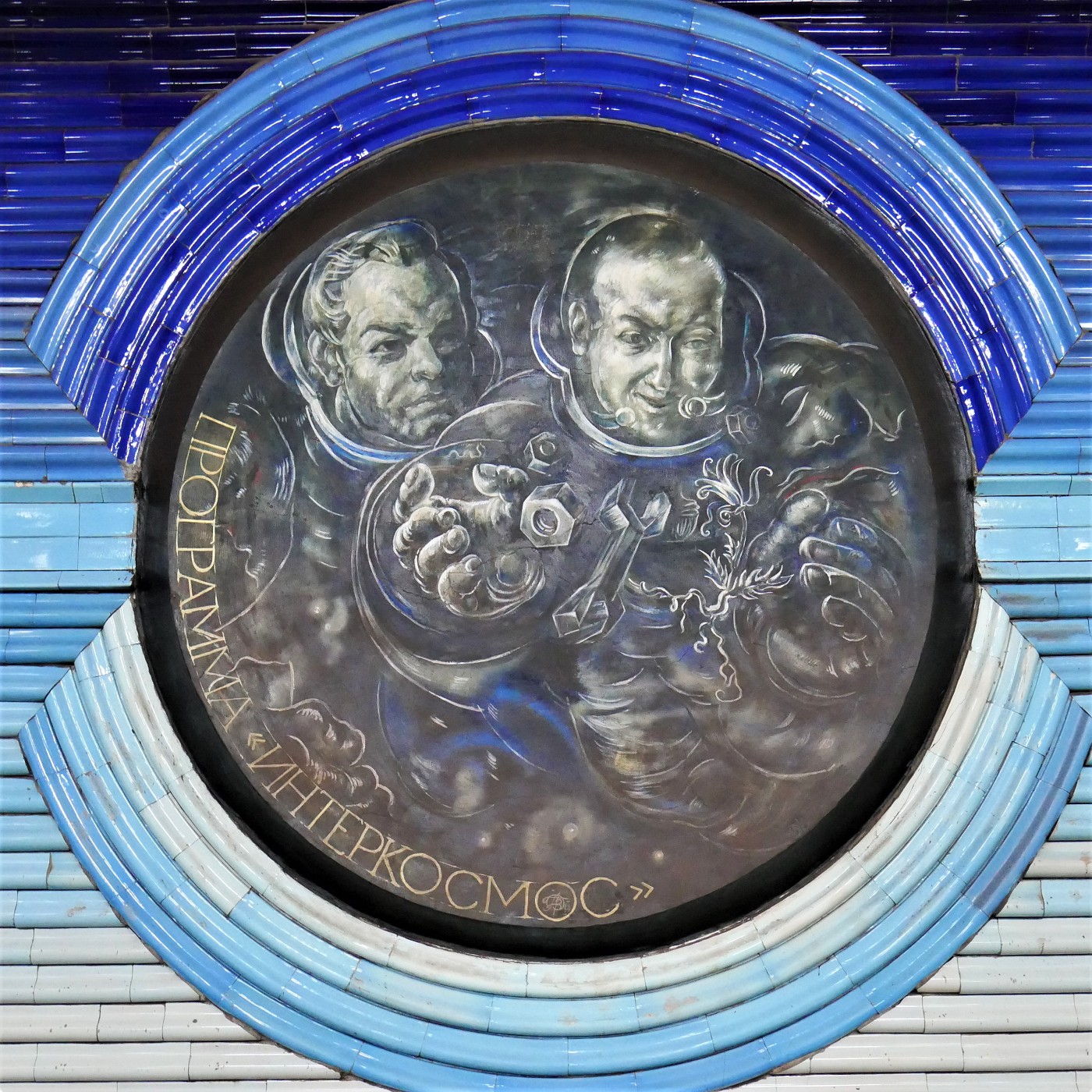
The Soviet space diplomacy program called Interkosmos helped citizens of non-launch + human spaceflight capable countries go to space. They trained these foreign crew during their stays in Star City and launched them alongside experienced Soviet cosmonaut comrades. The program ran from 1967 till 1994. So who are the two guys in this medallion? I have no idea and honestly, I couldn’t match the faces with confidence. Since Kosmonavtlar station only opened in 1984, the list of candidates who can be portrayed in this medallion is short. Meanwhile, I already reduced it to only two-man crews who didn’t have mustaches in space:
- Perhaps they are Aleksei Gubarev and Vladimír Remek (Czechoslovakia) on Soyuz 28 in 1978?
- Piotr Klimuk and Mirosław Hermaszewski (Poland) on Soyuz 30 (1978)?
- Could they be Valery Bykovsky and Sigmund Jähn (East Germany) on Soyuz 31 (1978)?
- Are they Yuri Ramanenko and Arnaldo Tamayo Méndez (Cuba) on Soyuz 38 (1980)?
- Should one place bets on Leonid Popov and Dumitru Prunariu (Romania) on Soyuz 40 (1981)?
After looking at so many pictures of men, they all kind of start looking the same. Perhaps anyone who reads it can identify the two guys?
Apollo–Soyuz
 Ah, the end of the space race. In 1975, the Soviet Union and the USA decided to join scientific forces by connecting one of their Soyuz capsules with an Apollo module. As mentioned before, the first thing that happened when they opened the hatch was Leonov (see above) and Stafford shaking hands. Both crews had to learn each other’s languages. Of course, doing a mission like this required full cooperation between the two parties in order not to kill anyone aboard or on the ground. This mission led to later collabs such as the Shuttle–Mir program. Meanwhile the Soviet Union became Russia.
Ah, the end of the space race. In 1975, the Soviet Union and the USA decided to join scientific forces by connecting one of their Soyuz capsules with an Apollo module. As mentioned before, the first thing that happened when they opened the hatch was Leonov (see above) and Stafford shaking hands. Both crews had to learn each other’s languages. Of course, doing a mission like this required full cooperation between the two parties in order not to kill anyone aboard or on the ground. This mission led to later collabs such as the Shuttle–Mir program. Meanwhile the Soviet Union became Russia.
Space missions for peace!
Person. Mind. Universe
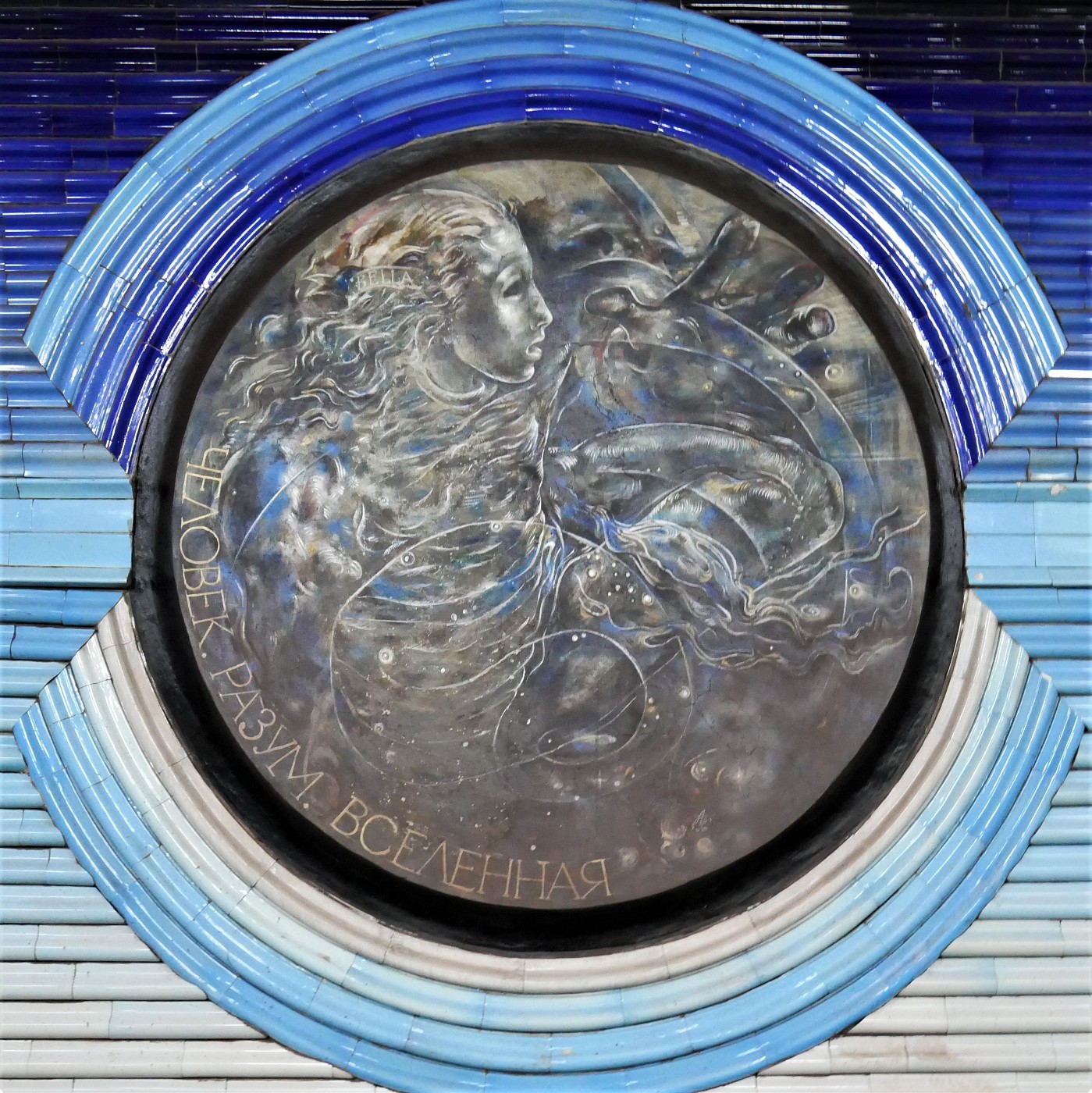 I guess this one is a little too abstract for me. The text says “человек. разум. вселенная” and it translates to these three words. For the rest, somewhere in the hair of the person, it says “Bella” in Latin script.
I guess this one is a little too abstract for me. The text says “человек. разум. вселенная” and it translates to these three words. For the rest, somewhere in the hair of the person, it says “Bella” in Latin script.
No idea what this is supposed to mean, but I’m welcoming your theories in the comment section at the bottom of this article.
The First Automatic Vehicle “Lunokhod”
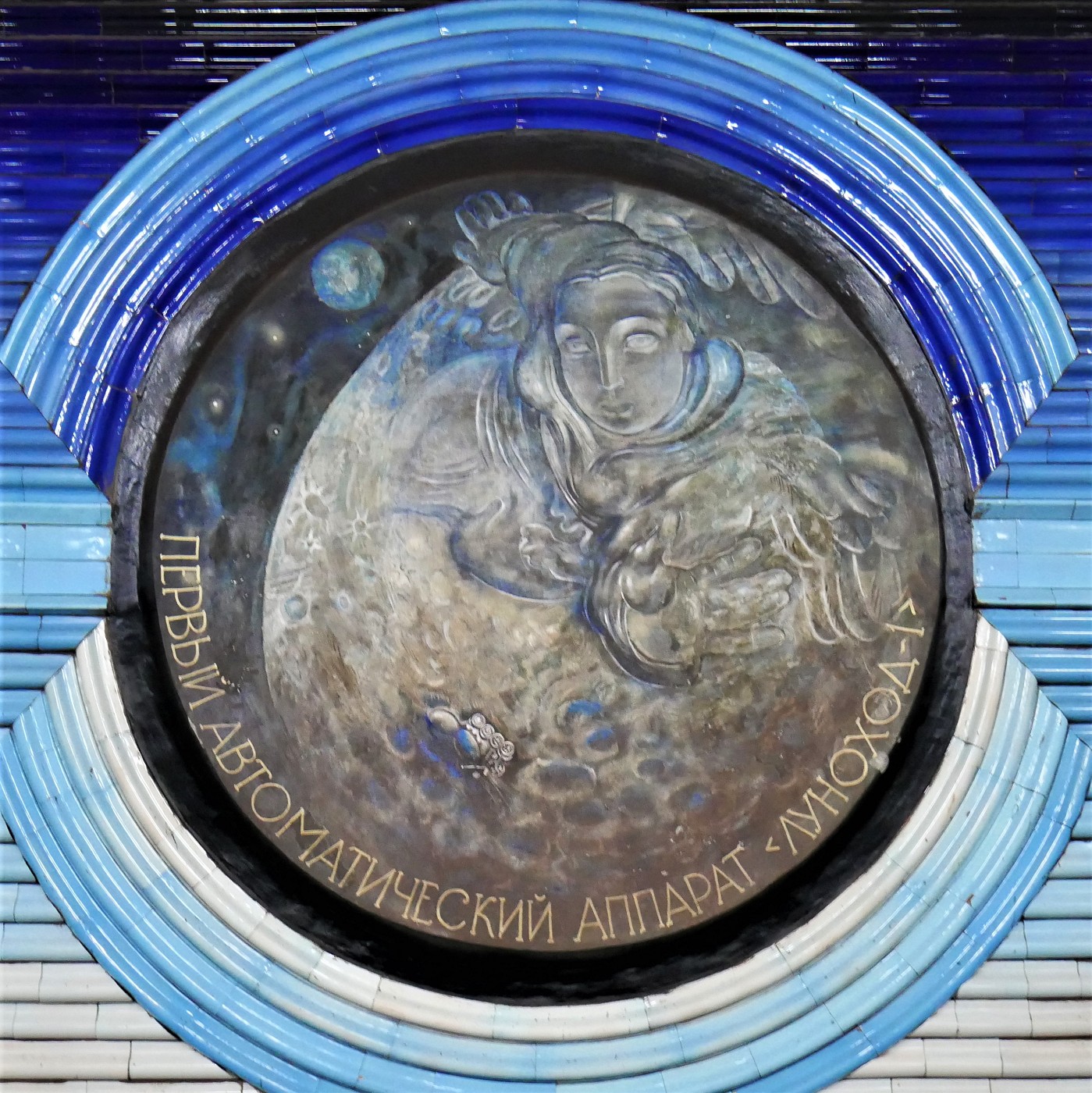
The Lunokhod programme saw the first-ever rover land on the surface of another celestial object (the Moon). Lunokhod 1 was the machine that traveled there on mission Luna 17. Despite the low expected lifetime of about 84 earth days, Lunokhod 1 rolled around happily for 321 days on the surface of the Moon, taking samples, measuring stuff with the instruments, and snapping photos to send them back to Earth. It traveled for more than 10 kilometers, which is pretty impressive. Supposedly it’s somewhere around here on the surface of the Moon.
Side note: the technology developed for Lunokhod rovers later proved useful during the removal of radioactive debris on top of the roof of Reactor 4 after the Chornobyl disaster.
After visiting all the portraits, I snapped a few more pictures before joining Jonas on the next train. After that magical escape from Earth, we had to prepare boring stuff for our flight to Ukraine.
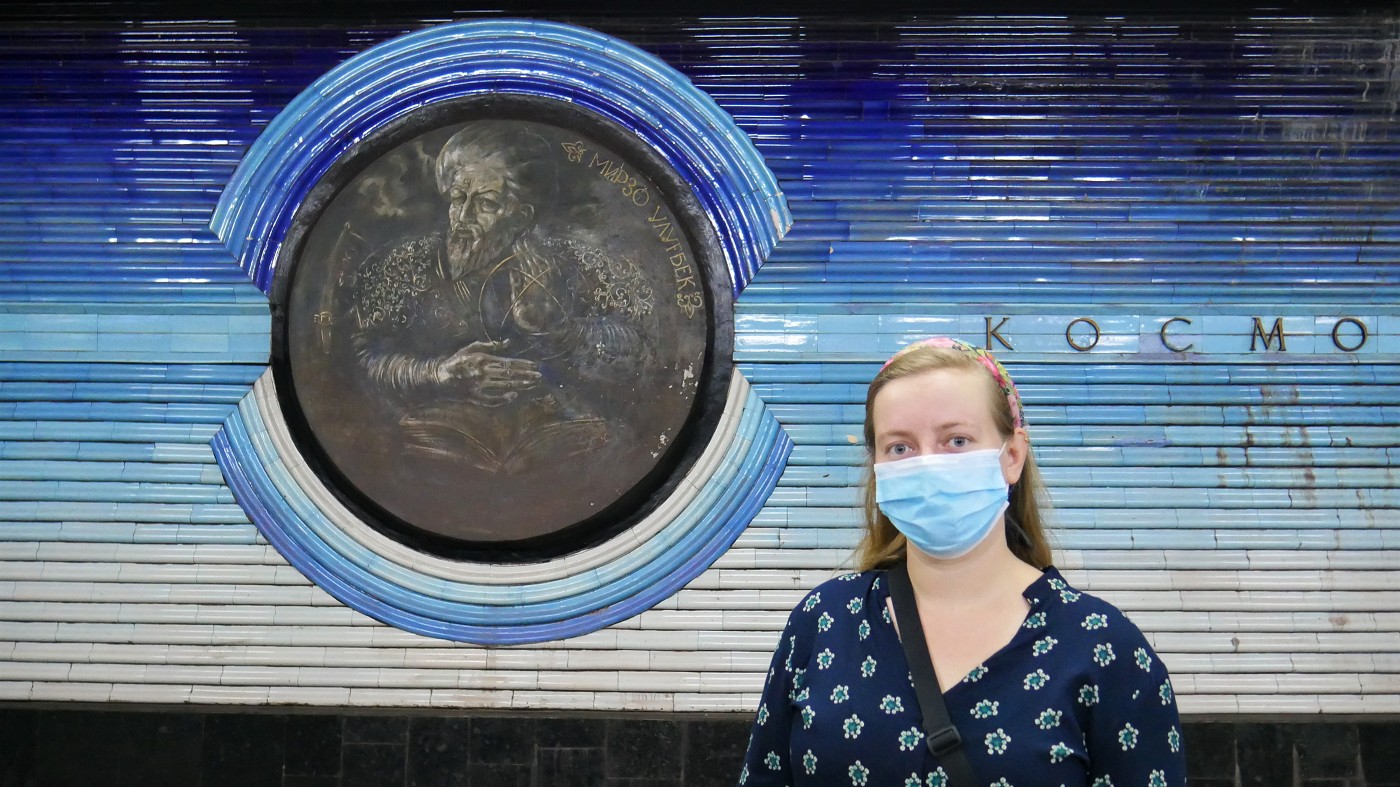
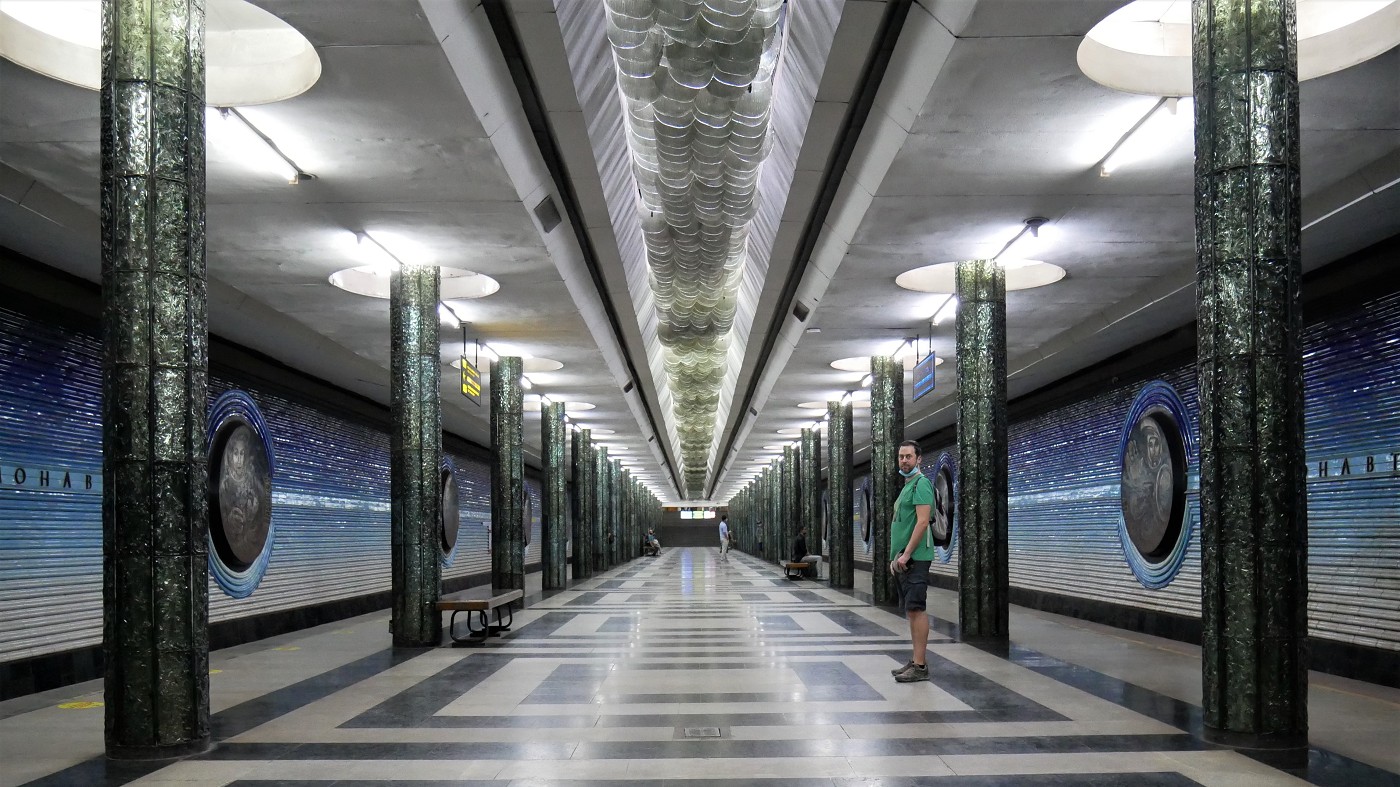



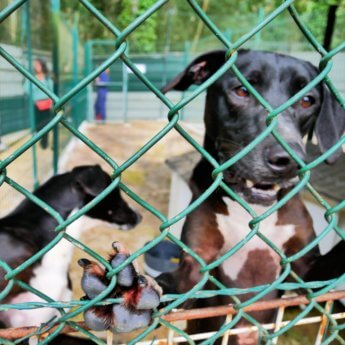
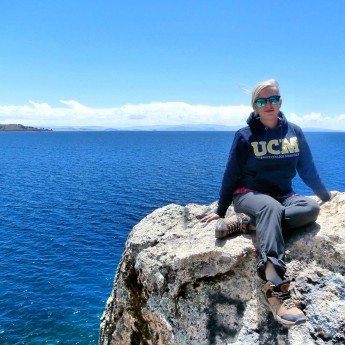

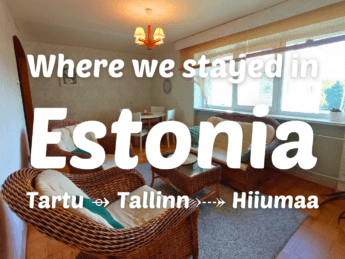
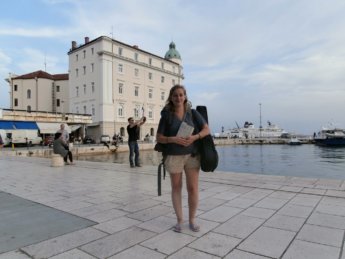
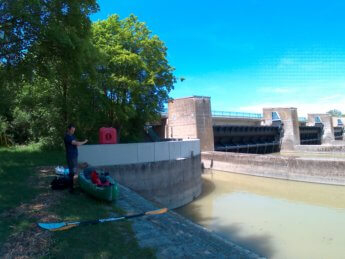

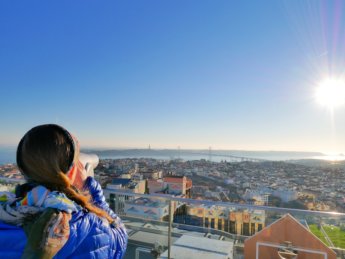

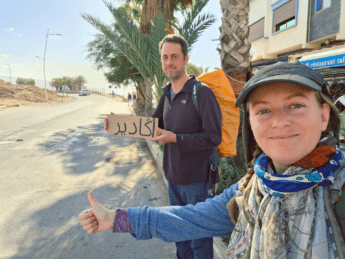
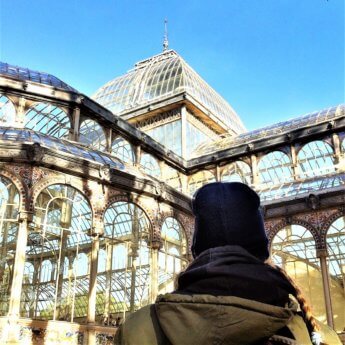
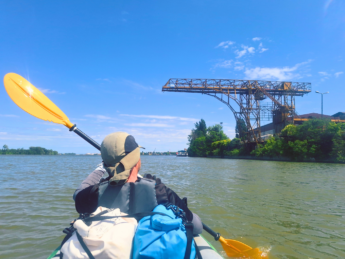
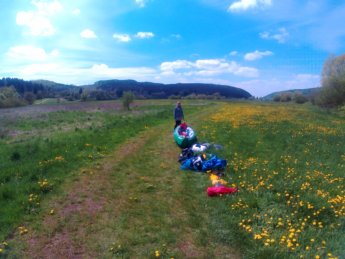

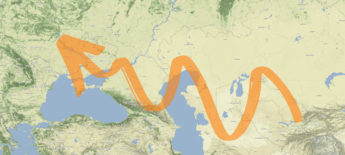
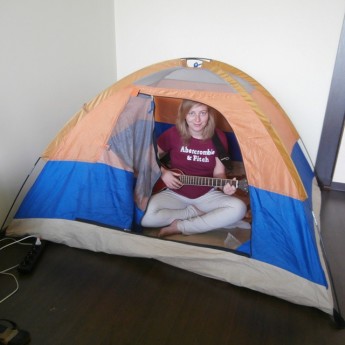
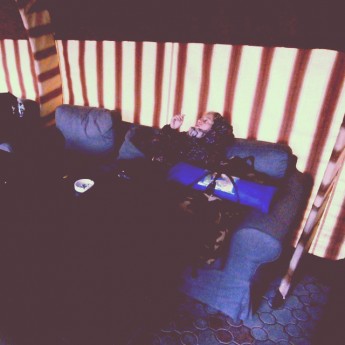

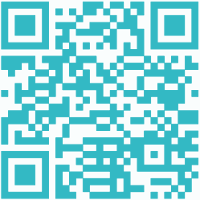
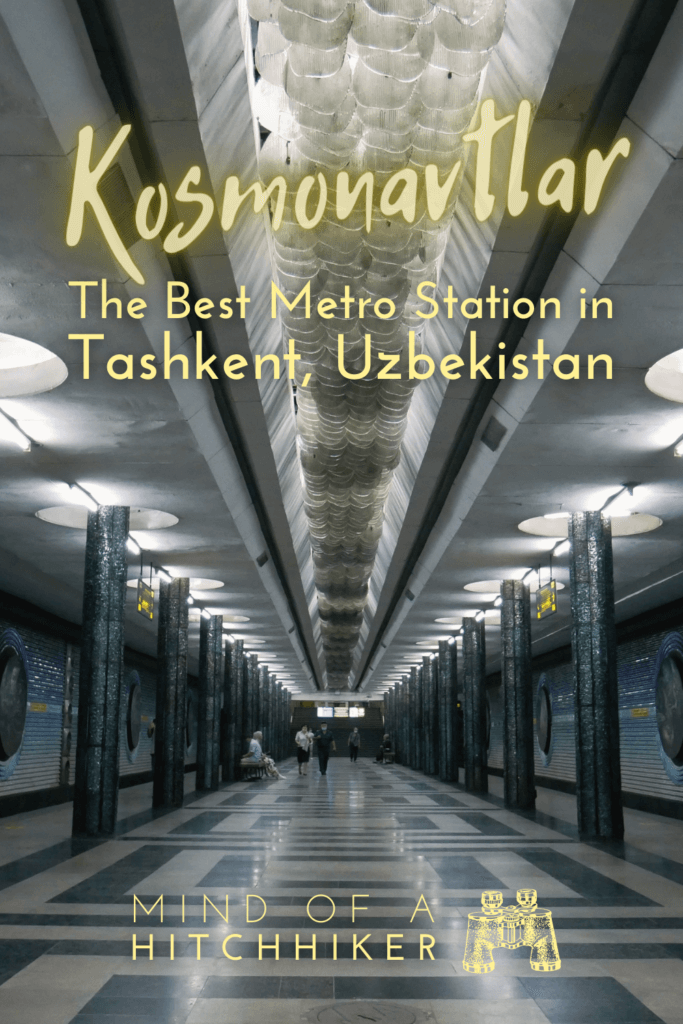
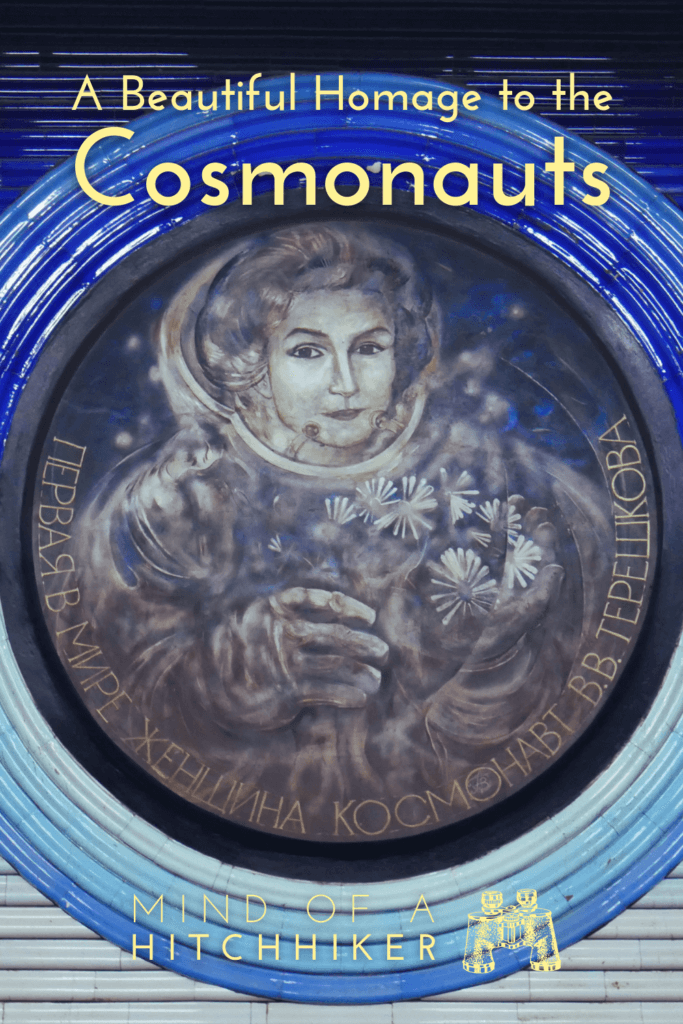
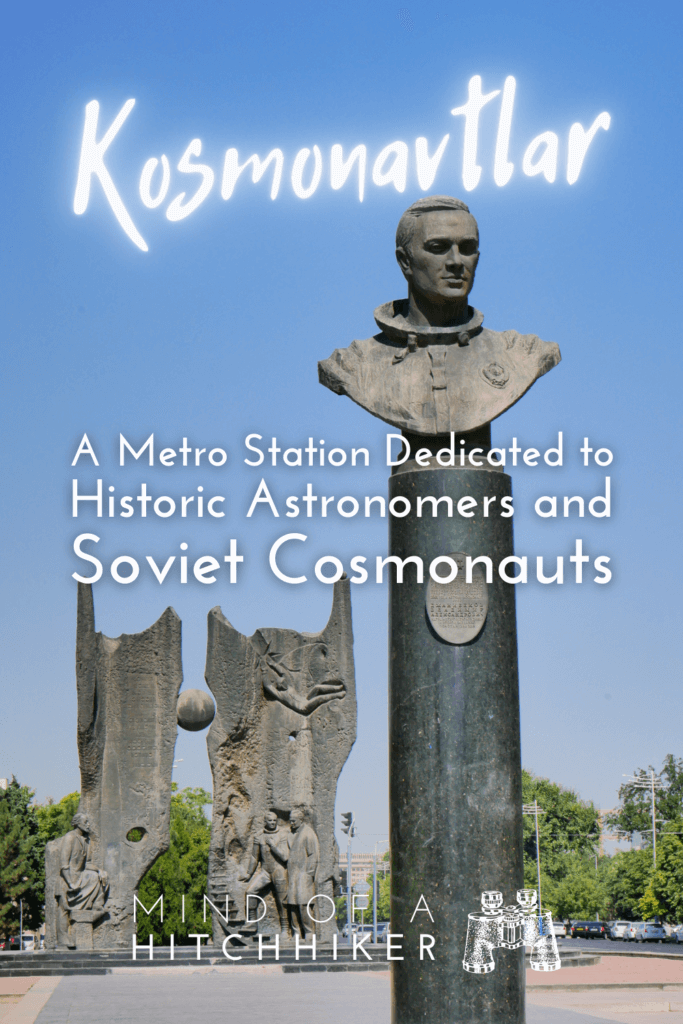
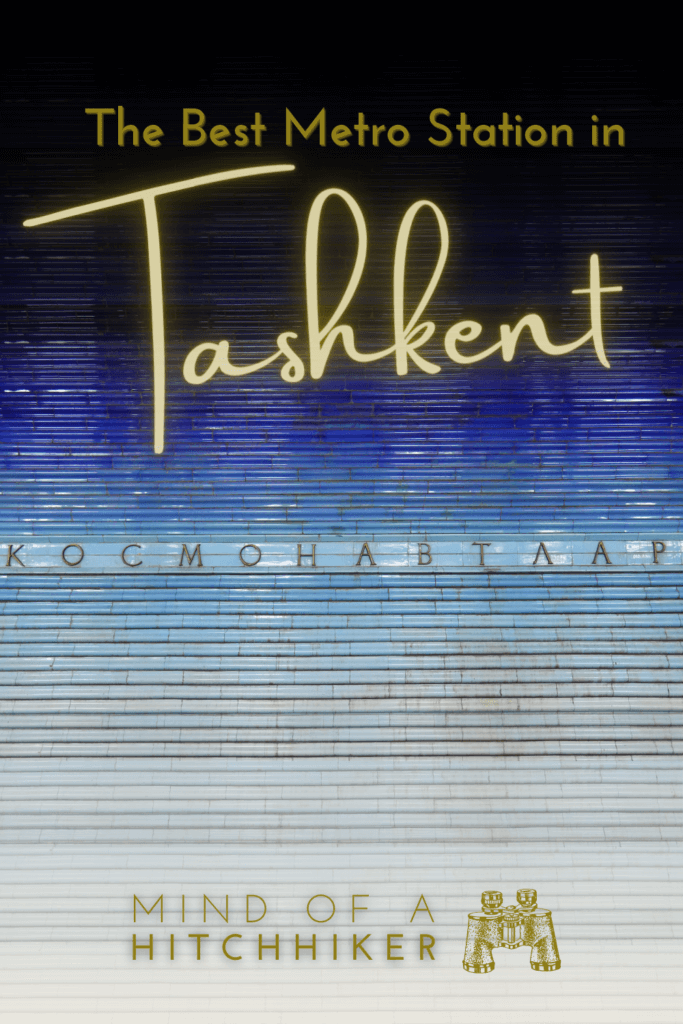
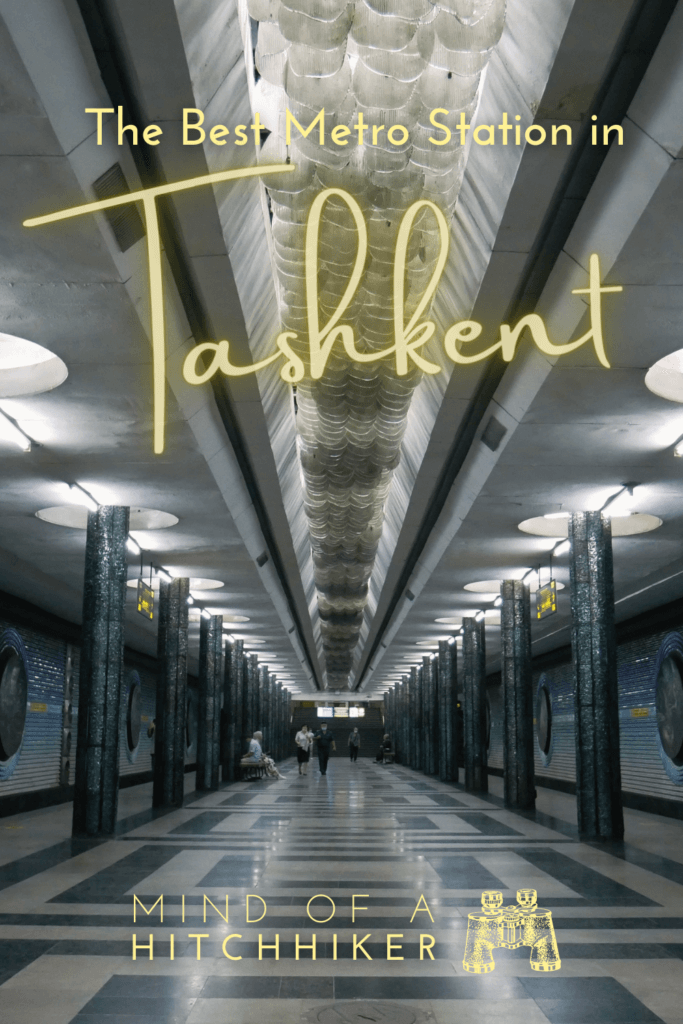
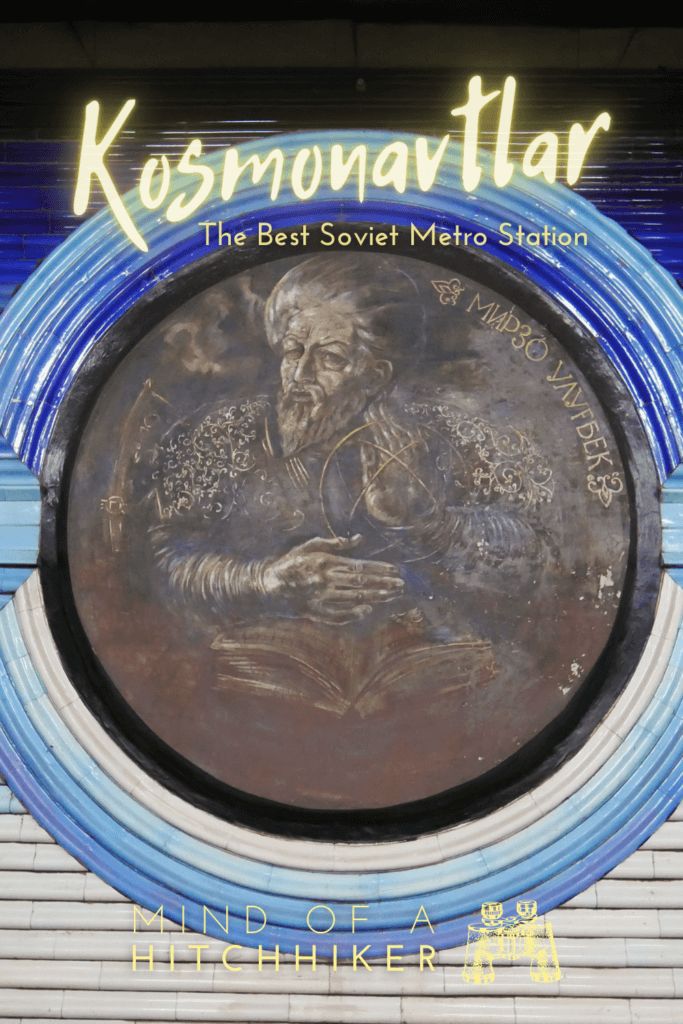

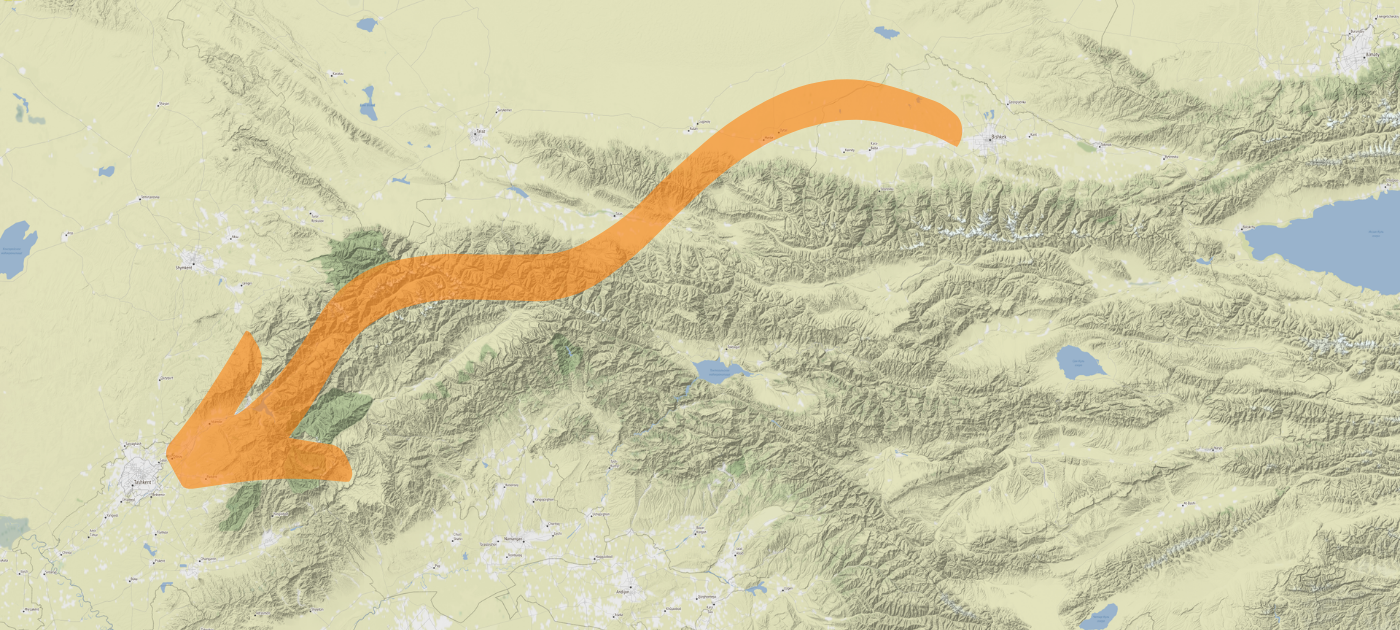
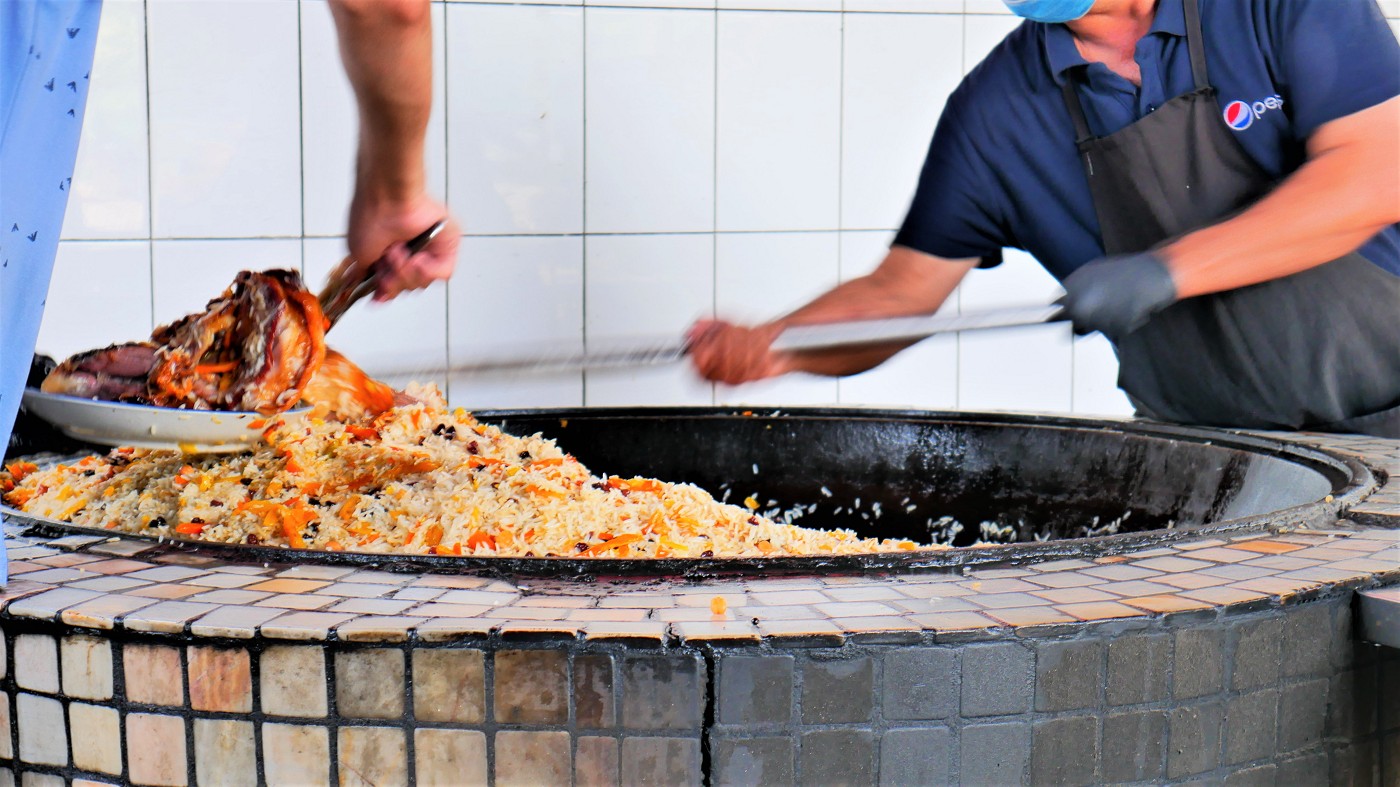
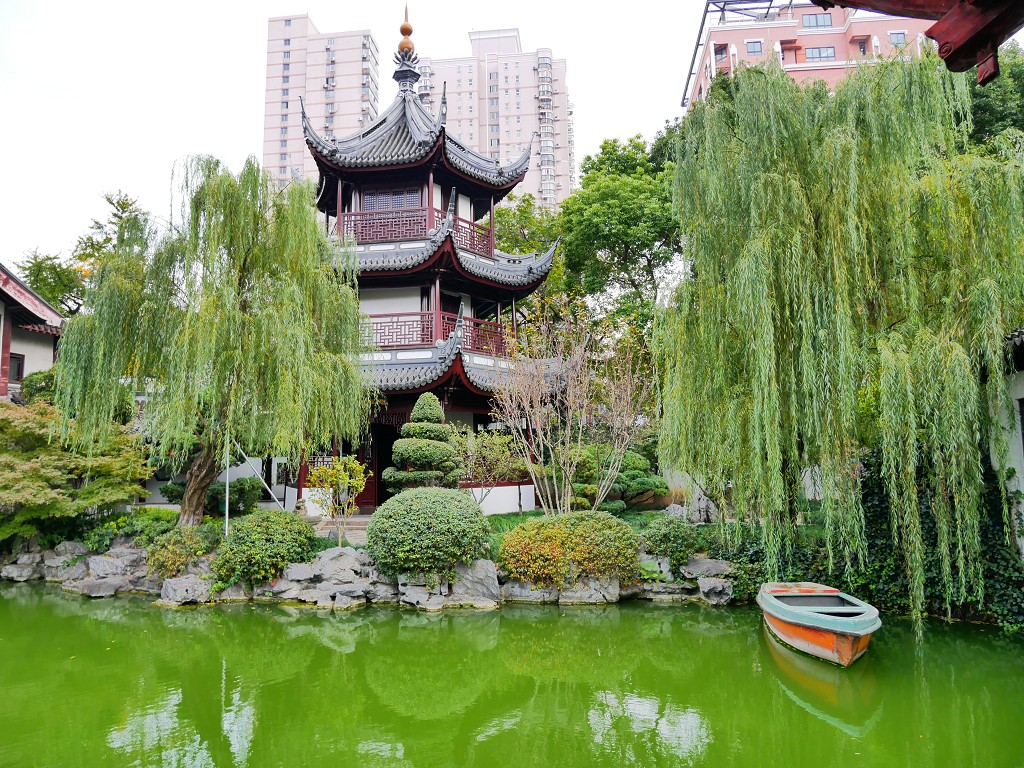
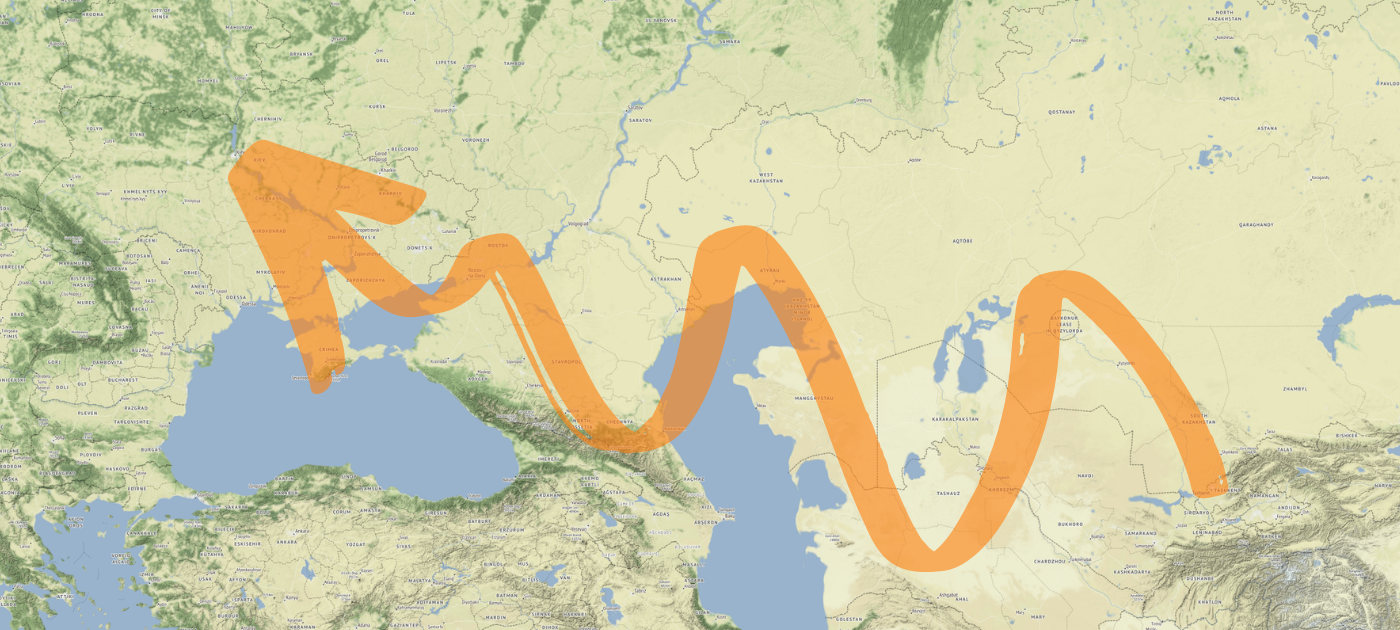
Thanks for this. I run a telegram channel here in Tashkent called Tashkent Monuments Project and your blog was a great source to jump off from.
Thank you! Good luck with your telegram channel and exploring the landmarks of Tashkent and beyond 🙂
hello, interkosmos plaque has portraits of first interkosmos flight crew, gubarev and remek
Cool, thanks for clearing that up!